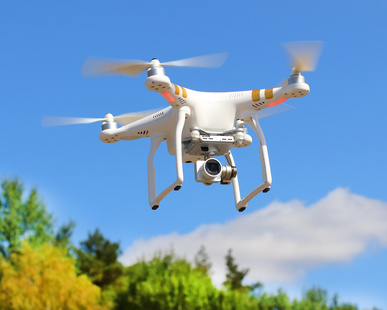LPA0003 - Drone Pilot Ground School
Course Description

You will build your knowledge about the regulations and procedures governing the legal operation of Small Unmanned Aerial Systems, sUAS, in the United States of America. Course content aligns with knowledge areas in the Federal Aviation Administration's, FAA's, Part 107 airman knowledge test for a Remote Pilot Certificate with a sUAS rating.
Course Outline
I. Regulations A. Registration and marking requirements B. 14 CFR part 107
II. Aviation Weather A. Aviation meteorology B. Effects of weather on sUAS performance B. Surface aviation weather observations C. Aviation weather reports and forecasts
III. Airspace Classification and Operations A. Controlled airspace B. Uncontrolled airspance C. Special use airspace D. Air traffic control and national airspace E. Airport operations F. Visual Flight Rules (VFR) G. Notices to Airmen (NOTAMs)
IV. sUAS Operations A. sUAS loading B. Maintenance and inspection procedures B. Emergency procedures C. Crew resource management D. Radio communication procedures E. Pilot performance F. Aeronautical Decision Making (ADM)
Learner Outcomes
STUDENT OUTCOMES: (The student should…) 1. understand and explain sUAS regulations stipulated in 14 CFR part 107
2. understand registration and marking requirements for sUAS
3. understand and explain the effect of weather on sUAS mission planning and performance
4. interpret aviation weather reports and forecasts
5. identify US airspace categories and describe their use
6. identify sources of information for US airpace and aviation weather information
7. describe considerations for all aspects of sUAS operations, such as loading, emergency procedures, and crew resource management
8. demonstration an understaning of radio communication procedures
9. understand and describe fators that affect sUAS performance
10. understand and describe factors that affect the performance of remote pilots 11. demonstrate an understanding of Aeronautical Decision Making (ADM) 12. create pre and post flight checklist
Notes

METHODS OF EVALUATION: Grades are based on demonstrated proficiency in subject matter. Proficiency is determined from:
1. Quizzes
2. Exams
3. Homework
TEXTBOOK & INSTRUCTIONAL MATERIALS
Federal Aviation Administration. (2016). Remote Pilot – Small Unmanned Aircraft Systems Study Guide.